
As individuals who have a great appreciation for the outdoors, it’s really important to us that our kids learn to find the same values in nature as we do. Whether it’s fishing, or boating, or hunting, or even just being outdoors; influencing your children to appreciate these same activities is essential. Starting your kids out with activities like fishing is a great way to get them to enjoy the outdoors. Fishing is safe, fun, and a really great bonding experience. Here are some tips on successfully getting your kids involved:
Get them off technology
Before you hand your kids a video game, hand them a fishing pole. With new age technology and gadgets it can be hard to pry your kids aware from the screen, but in doing so, you can create amazing memories to be cherished for a lifetime. Fishing is one of those rare activities you can do with the whole family where every single person is involved and it’s peaceful enough to be able to enjoy each other’s company.
Keep it simple
You want to simplify the first experience so that the focus is on catching with the gear that matches the age range and probable skill of the child. For ages four to six, you will want a short rod of no more than 5 feet in length and with a flip-bale spinning reel. Your local outdoors store will certainly sell age appropriate gear.
Practice first
Before you head out on the water, have your child practice casting off in the backyard. This can save a lot of time and possible frustration on the boat later. Before you go out on the boat, practice off the dock.
Start small
A local pond or slow-flowing River is a good start for a fishing location. These bodies of water are typically stocked with a variety of easy to catch fish. Don’t take your kids fishing and expect to hook enough fish to feed yourselves for the year. It’s more about the bonding, less about the success of catches. Your children might not want to stay out on the lake all day, and that is totally understandable. Remain patient and flexible.
As your child becomes a more skilled angler, you can venture out to different spots where harder to catch fish thrive.
Burntwood Lake Lodge is a great place to visit once your child has had some practice with fishing. To book your family fishing vacation, give us a call.
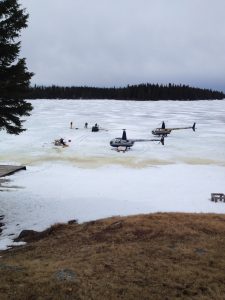
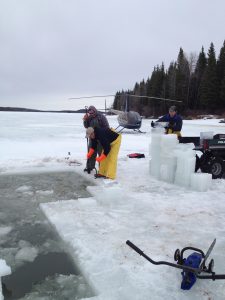
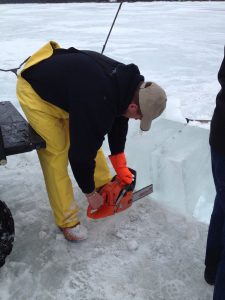
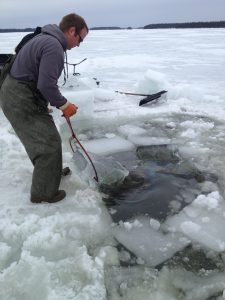







 As individuals who have a great appreciation for the outdoors, it’s really important to us that our kids learn to find the same values in nature as we do. Whether it’s fishing, or boating, or hunting, or even just being outdoors; influencing your children to appreciate these same activities is essential. Starting your kids out with activities like fishing is a great way to get them to enjoy the outdoors. Fishing is safe, fun, and a really great bonding experience. Here are some tips on successfully getting your kids involved:
As individuals who have a great appreciation for the outdoors, it’s really important to us that our kids learn to find the same values in nature as we do. Whether it’s fishing, or boating, or hunting, or even just being outdoors; influencing your children to appreciate these same activities is essential. Starting your kids out with activities like fishing is a great way to get them to enjoy the outdoors. Fishing is safe, fun, and a really great bonding experience. Here are some tips on successfully getting your kids involved:
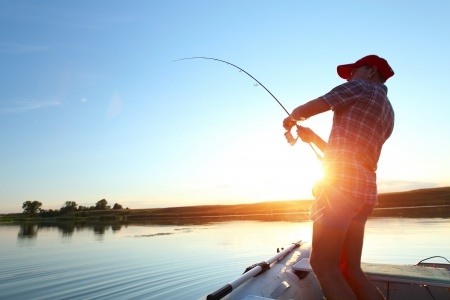 Many fishermen have used both live and artificial bait on various fishing trips; but a successful catch can depend on many different variables, so it may be difficult to tell which bait is actually more effective.
Though there are no absolute answers to this question; both types of bait have their pros and cons. If you are going to choose between one type or the other; you can make the most educated decision as to which is best for you by knowing the various advantages and disadvantages.
Artificial Bait/Lures
Fish naturally go for bait when they are hungry. Artificial lures have the ability to create certain physical actions that can lure fish even when they are not looking for food. This gives the fisherman more options to secure a successful catch.
There are lures that will vibrate and make noises that can be detected by fish from long distances; and topwater lures, like crankbait, which mimic the actions of a fleeing batfish. Artificial lures also allow fishermen to travel distances in large bodies of water while in search for a good location.
One artificial lure can last for many fishing trips tucked away in a tackle box; this is not an option when using live bait.
Live Bait
Of course, artificial lures are made to mimic live bait. This is why many fishermen prefer to use the real thing. They naturally have a scent that fish are drawn to. Avid fishermen know that there are some varieties of fish that will only react to live bait. This advantage makes live bait the preferable choice when fish simply are not biting, or waters are too cold.
Expense can be debated. Artificial bait can be used multiple times, if you have an unsuccessful outing; however, many varieties can be expensive to purchase. While live bait is often pretty cheap.
Though artificial lures can be reused, they often get lost and you will need to purchase more which can get costly over time. Live bait is the simplest to use, which makes them perfect for novices. It’s most fun to use live bait when teaching children to fish. You can even search for your own bait; which many outdoorsmen enjoy as a hobby.
In conclusion; both live and artificial bait will catch fish; you just need to find out which type works best for you.
Many fishermen have used both live and artificial bait on various fishing trips; but a successful catch can depend on many different variables, so it may be difficult to tell which bait is actually more effective.
Though there are no absolute answers to this question; both types of bait have their pros and cons. If you are going to choose between one type or the other; you can make the most educated decision as to which is best for you by knowing the various advantages and disadvantages.
Artificial Bait/Lures
Fish naturally go for bait when they are hungry. Artificial lures have the ability to create certain physical actions that can lure fish even when they are not looking for food. This gives the fisherman more options to secure a successful catch.
There are lures that will vibrate and make noises that can be detected by fish from long distances; and topwater lures, like crankbait, which mimic the actions of a fleeing batfish. Artificial lures also allow fishermen to travel distances in large bodies of water while in search for a good location.
One artificial lure can last for many fishing trips tucked away in a tackle box; this is not an option when using live bait.
Live Bait
Of course, artificial lures are made to mimic live bait. This is why many fishermen prefer to use the real thing. They naturally have a scent that fish are drawn to. Avid fishermen know that there are some varieties of fish that will only react to live bait. This advantage makes live bait the preferable choice when fish simply are not biting, or waters are too cold.
Expense can be debated. Artificial bait can be used multiple times, if you have an unsuccessful outing; however, many varieties can be expensive to purchase. While live bait is often pretty cheap.
Though artificial lures can be reused, they often get lost and you will need to purchase more which can get costly over time. Live bait is the simplest to use, which makes them perfect for novices. It’s most fun to use live bait when teaching children to fish. You can even search for your own bait; which many outdoorsmen enjoy as a hobby.
In conclusion; both live and artificial bait will catch fish; you just need to find out which type works best for you.